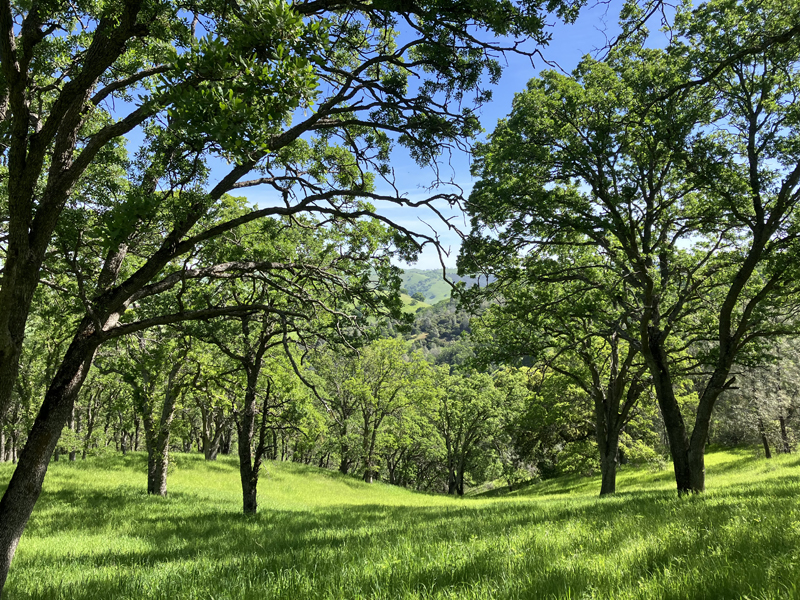Mount Diablo’s early settlers understood land management

 CLAYTON, CA (July 10, 2024) — The diaries of the first Europeans to set eyes on the Mount Diablo region described the landscape as wild and untamed. But in reality, they were seeing a garden the native peoples had been tending for thousands of years.
CLAYTON, CA (July 10, 2024) — The diaries of the first Europeans to set eyes on the Mount Diablo region described the landscape as wild and untamed. But in reality, they were seeing a garden the native peoples had been tending for thousands of years.
Burning, pruning and selective harvesting were some of the techniques used to manage the native plants in a way that would provide a plentiful food supply and material for shelters, clothing and tools.
Burning was the “primary management tool,” according to author M. Kat Anderson, and the results were beneficial to the environment in many ways.
In the oak forest, for example, dead leaves, branches and small understory plants would collect around the tree trunks – creating a barrier to needed nutrients and a home for pests that threatened the acorn harvest and overall health of the trees. When a fire cleared the forest floor, the trees enjoyed better growing conditions with more room, sunlight and access to nutrients.
The people could collect the increased yields of acorns easily, and other edibles like mushrooms, bulbs and greens were able to flourish. Fire also extended the range of grasslands that fed grazing animals needed for meat and improved sightlines for hunting. Most importantly, clearing by fire prevented the possibility of future catastrophic blazes.
Pruning and selective harvesting
Pruning was a second technique used to create space that optimized both plant health and food production. They carefully pruned branches of manzanita to encourage increased berry harvests to be made into a delicious cider. Meanwhile, they used the flexible new shoots from pruned oaks and redbuds to make baskets and bows.
Selective harvesting by the native peoples was characterized by a respect for the plants and harvesting only the amount that was needed so the plant could flourish and provide for other animals. They gathered grass seeds with a handled shallow basket held in one hand used to “beat” the seed heads into a second basket in the person’s other hand. This technique left each grass plant intact to produce more seeds and forage for animals.
These few examples show how the indigenous peoples in this area wisely managed their natural resources according to the seasons and the individual characteristics of each plant. The idea of the ‘hunter-gatherer” moving through the landscape aimlessly collecting whatever food they happened to find is a false label assigned by early observers who had no desire to look further into ancient plant practices and the sophisticated knowledge behind them.
Anderson’s book, “Tending the Wild,” provides an excellent reference with fascinating examples of native ingenuity.
For more information or to become a member, visit claytonhistory.org. Visit the Clayton Museum between 2-4 p.m. Wednesdays and Sundays at 6101 Main St.. Free admission.

Debbie Eistetter
Debbie Eistetter has been a resident of Clayton for almost 30 years. She serves on the Board of the Clayton Historical Society and believes that history shows us the way to a more enlightened present and hopeful future. For more information about the CHS Museum please visit claytonhistory.org
